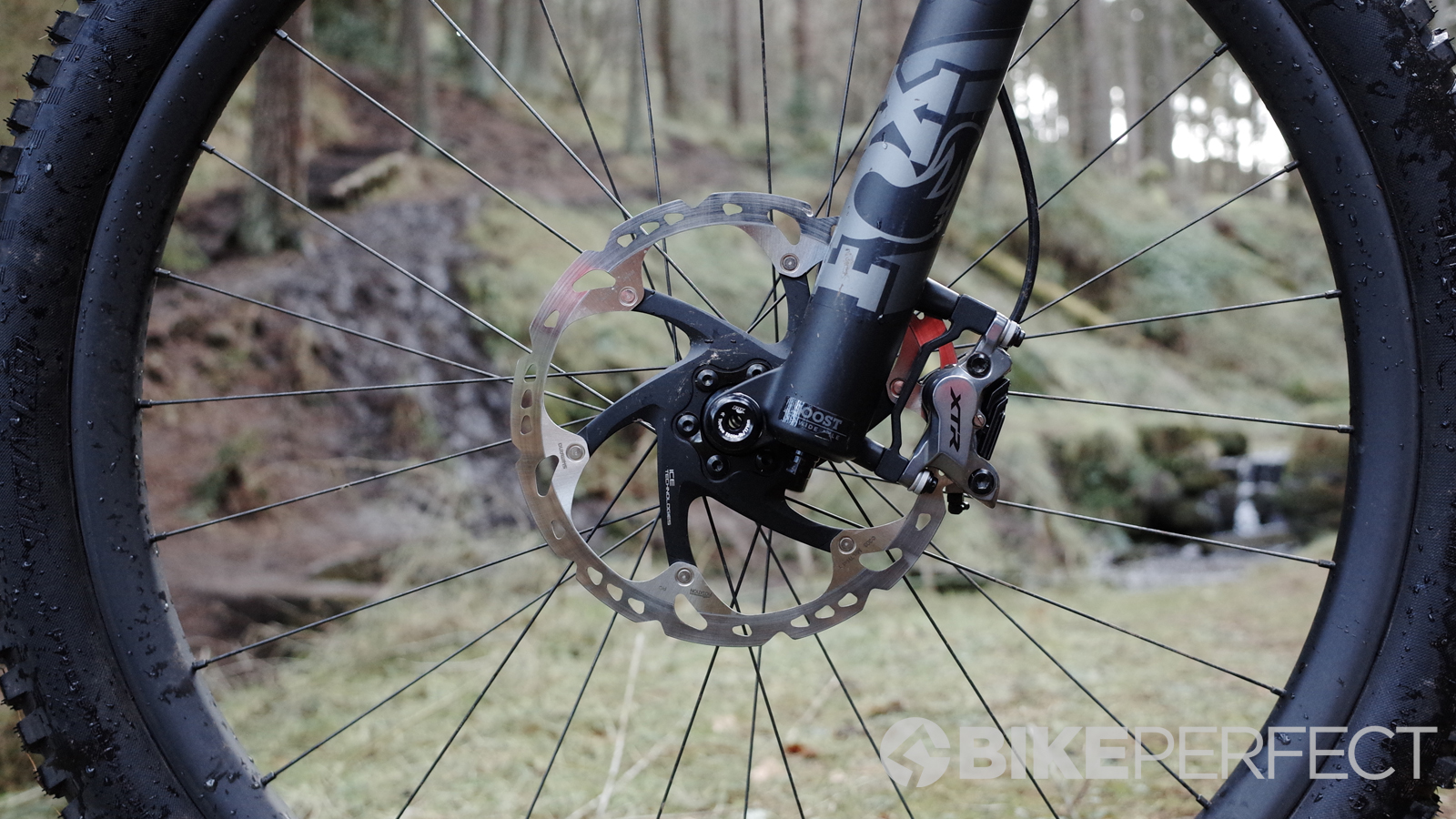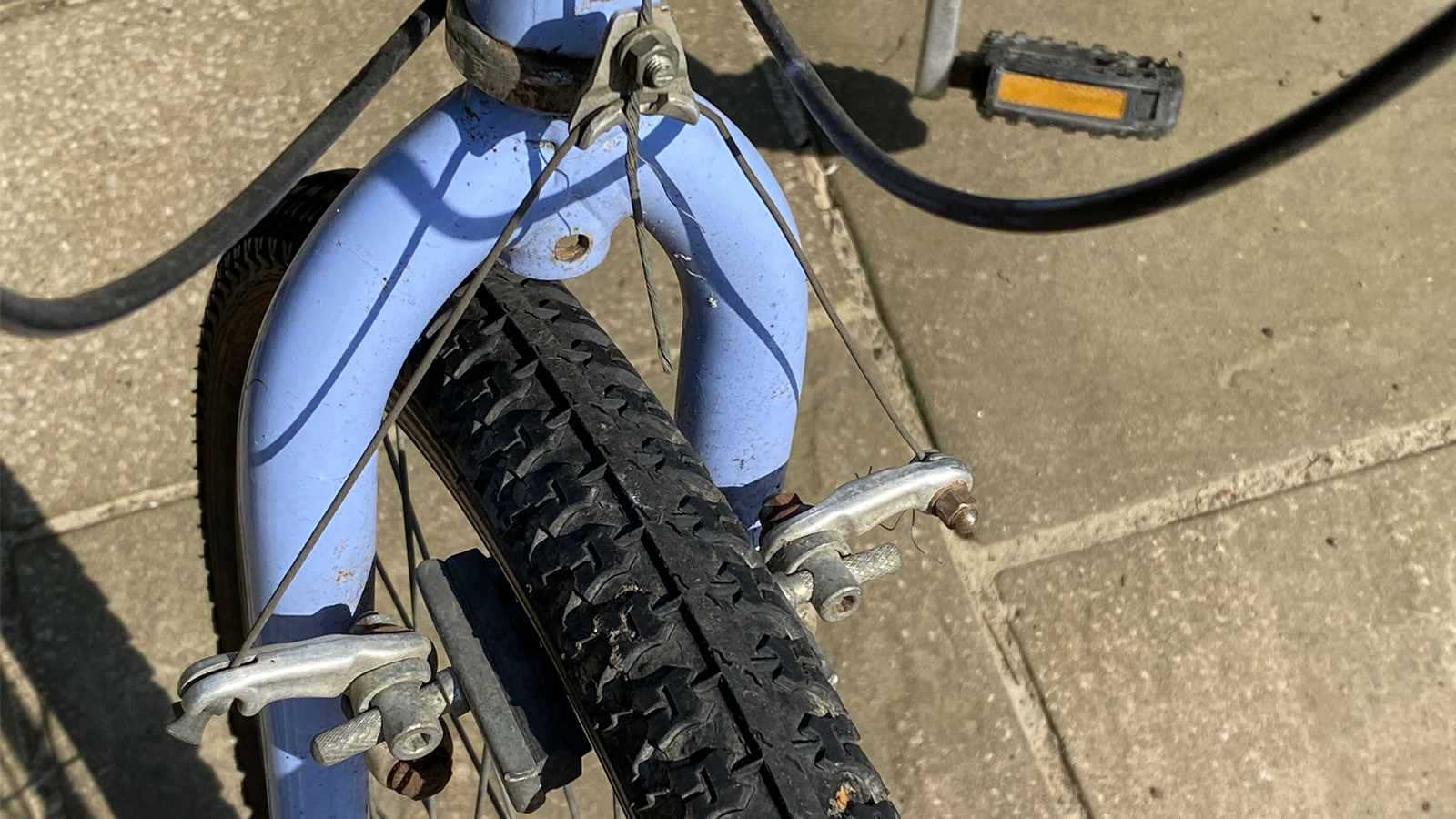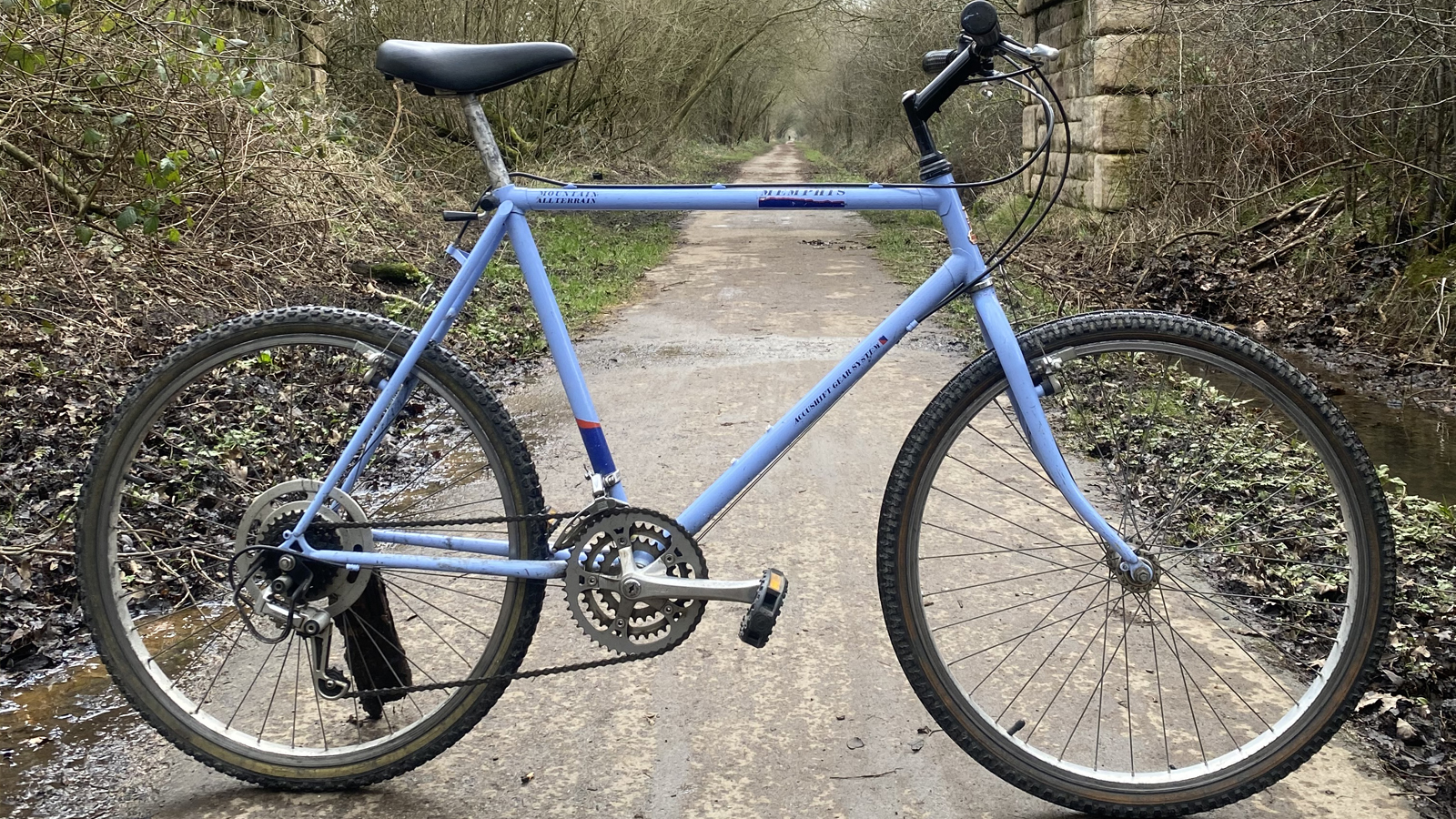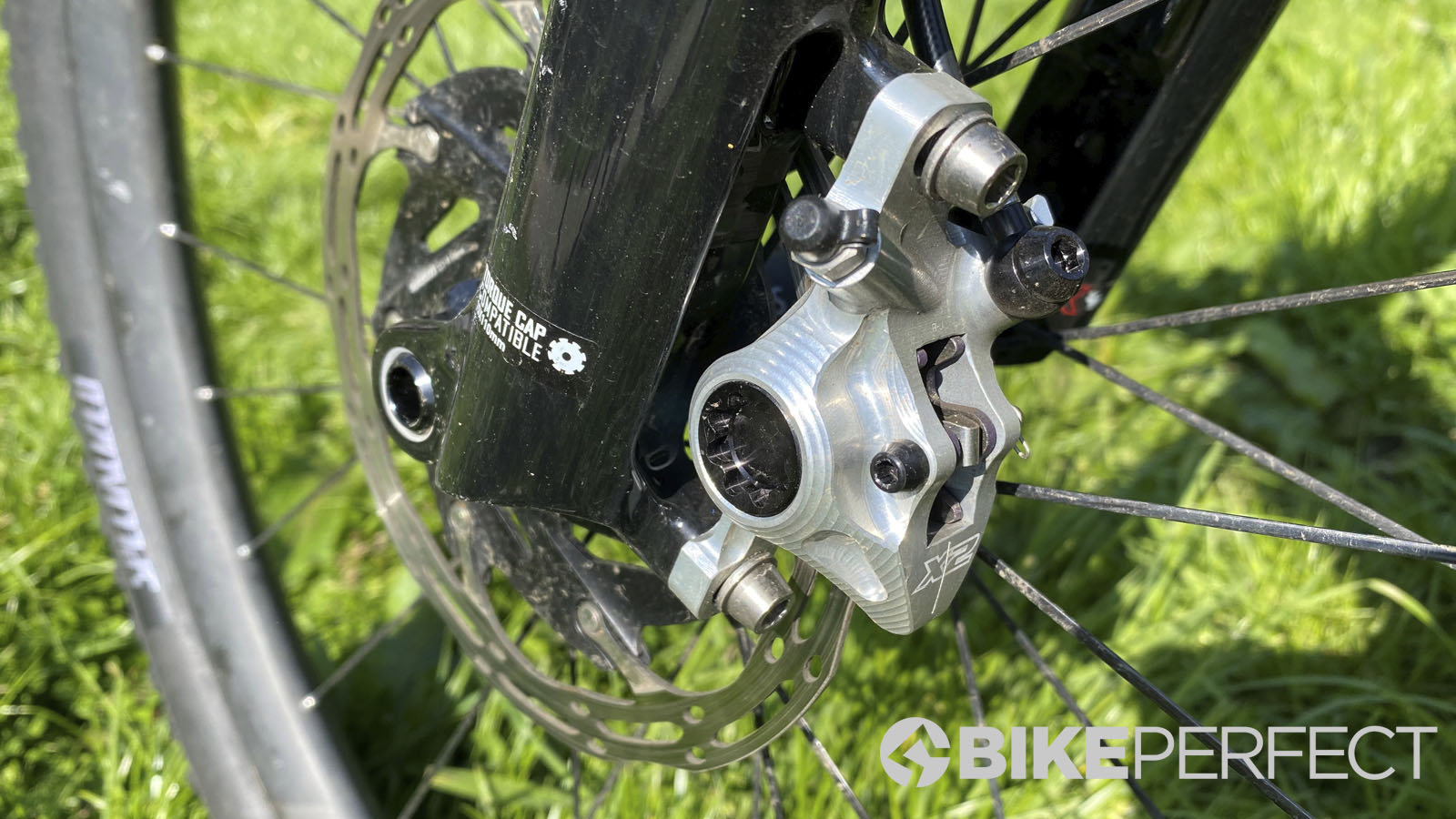Bespoken Word: Braking bad
Guy Kesteven takes a terrifying journey back through the history of mountain bike brakes, gives advice on the anchors of today and wonders what might happen next

Geometry, suspension, dropper posts. They’re all very important when you’re pushing your limits off-road, but apart from a frame that holds both wheels in roughly the right place, nothing boosts or shatters confidence more than brakes.
Youngsters - or those new to mountain biking - might be nodding their heads and thinking of that time one of their disc brake levers suddenly came back to the bar without warning. Or those ones they tried that were so stiff in feel that they made their arms explode with fatigue halfway down the hill. But - and I’m old enough to say this now - if that’s the extent of your anchor anxiety then frankly my friend you have no idea how good you have it right now.
To be fair to utterly rubbish and unsuitable brakes, I might not even be here writing this now without the worst braking set-up I have ever used. I once fished a bike out of Exeter Ship canal to make my commute to the boat house easier. Had that been blessed with straight wheels and functional brakes to make it safe to ride on the road, I wouldn’t have changed my journey to include as many woods and tracks as possible. Thankfully the tacoed steel wheels and crooked side pulls of my heavily rusted Peugeot hybrid proved to be the perfect escape when my back imploded from rowing-related overtraining. Soon I’d swapped regattas for ricocheting off trees in Haldon forest (well before any official trails but when coffee was limitless at the Happy Eater cafe) and eating dirt at Woodbury Common.

- Best mountain bike brakes: Bike Perfect's pick of the best MTB brakes
Things got noticeably better when I ‘invested’ my student grant (yeah OK, we didn’t know how lucky we were then either) in a Giant Escape with four finger brake levers literally half the width of the bars and plastic coated cantilevers screeching against alloy rims. Even in 1989 though, that braking technology hadn’t really evolved beyond the original Clunker tech of Magura motorbike levers and cyclocross cantilever brakes that helped Gary Fisher to his Repack race victories in the 70s. OK so we didn’t have to splice our own brake cables together to cope with terror strength lever hauling but even in the dry, actual stopping power was pitiful and in the wet, non-existent. Apart from anodized bolts and straddle buttons that made sod-all difference, the only potential upgrades were various aftermarket pads, including the legendary Scott Matthauser finned sets or the Aztec ones that came with a handy cut out ‘toe in’ tab on the cardboard packaging to help you stop the squeal. There were some exotic options like Magura hydraulic rim brakes that were absolutely rim-crushingly brilliant, Powercam brakes with their wedge plates and rollers and convoluted U brakes that GT, in particular, loved but mostly it was just an endless exercise in turd polishing.
We spent hours carefully balancing the springs on either brake arm and trying to find the sweet spot position of the straddle cables that pulled them together but the best you could hope for was eventual, vague slowing down and all you normally got was a derisive hissing noise as you accelerated towards doom. This was multiplied by the fact that lack of suspension meant your death-gripped braking turned any rough terrain even more batteringly brutal and on some bikes, the brake cable was routed vertically through the stem so that any flex would pull and release the brakes at random. At that time though it was mostly about the up, and we all just wanted either Dia Compe 987s or the virtually indistinguishable Ritchey Logic cantilevers. Not because they worked any better or even at all, but because they were lighter. Oh and don’t forget that in the UK pads sometimes lasted less than a weekend and that same abrasion wore out soft alloy rims in a couple of months. Any slight wobble or dent in the rim was a disaster in terms of braking too. In fact, the only thing that ‘helped’ was the fact we were all still riding road bike geometry and were fashionably cutting down bars so narrow we had to stagger the height of our levers so the cables didn’t clash, so whether or not we could stop was just one element of the suicide-optimized set up.

If you’re wondering about disc brakes then yes, Shimano put some on a shopping bike in the 70s, but never thought to resurrect them as part of the original XT MTB group. In fact, Pro-Stop used massive motorbike-sized rotors with a cable pull hydraulic system that was so temperamental it made Ringle cantilevers seem a joy. Plus when the pads wore out I can remember having to try and carve some replacements out of a scrapped set of car brakes. AMP had a beautiful minimalist set on its similarly feathery linkage forked FS bikes but they were basically just decorative in terms of meaningful, reliable power. The Hope boys were carving crude-looking corkscrew designs out of blocks of alloy to try and replicate the performance of their trials motorbikes but even Hope had to make its own hubs and fork brackets to fit them onto bikes. The brakes did at least stop you in wet weather though and when I botched them onto my steel frame in place of a front Pro Stop and a rear U brake there was a dramatic change in the ratio of shorts being stained from the outside rather than the inside on muddy descents.
Rim brakes were saved from rapid and rightful extinction by the V-brake though. These long-armed, side pull evolutions of cantilevers had been available from some exotic brands but it was when Shimano introduced them on XTR and XT that things really changed. Yes, you had to wrap small zip ties around the tiny parallelogram linkages that squeezed the long, narrow pads perpendicularly onto the rims to stop them squealing, but at least it was them shrieking and not us. Then Shimano realized that you didn’t need the linkages anyway and the super simple yet powerfully effective M600 V-brakes came out and exposed cantilevers for the embarrassment that they were.
They still wore out pads and rims in days and weeks but because they didn’t need different hubs, rims, frames or forks than before, V-brakes were a cheap, light and effective upgrade. They actually stopped you pretty well, as long as your rims were clean and straight and most disc brakes were still rubbish. Hope was the choice of most DH riders (they regularly filled the top ten at races) but their closed design meant you had to twiddle dials on the reservoirs halfway down the hill to stop them pumping solid. RockShox had tried to buy the design but Hope refused so RockShox just rebadged the AMP brake without bothering to make it work. With Magura's Clara and Cannondale's own-brand stuff with single-sided piston designs, leaks, squeaks and pads that lasted less than 20 minutes (yes seriously) if you didn’t bed them in properly, they struggled to catch on.
Besides, it was only us idiots in the UK who rode through the winter muck that would wear V-brake pads and rims out in hours rather than months. In fact, I can still remember the shock and horror of riding across the Yorkshire Dales with some Trek top brass in the late 90s and then finding they had no brakes left by halfway round. Interestingly enough Trek introduced its first bike with disc brakes the very next year equipped with the iconic Hayes HFX-7 brake in all its fit and forget, consistently powerful glory.
This was really the watershed brake too. It was heavy and looked bulky on the bars compared to cable brakes but it was reliable. The easily aligned Hayes/Manitou post-mount design was way ahead of side mount ‘IS’ designs and it did magical things like automatically compensate for pad wear and heat build-up. Soon Hayes brakes were everywhere and other brands finally, thankfully, abandoned rim brakes as their main stopping solution. Shimano introduced a similarly solid four-piston design (based on the Grimeca brake or it might have been the other way around), Formula started producing slightly fragile but very high-performance brakes in Italy and Magura introduced its Gustav mega brake which people still talk about lovingly. Avid went for a two-pronged BB7 cable pull and Juicy hydraulic battle plan.
Unfortunately for Hayes, its Camino follow-up to the all-conquering HFX wasn’t as popular and its place on the world’s handlebars was lost. In the UK at least Formula is fielding a much-reduced range with less visibility than before too, which is a shame as their Cura is one of the best brakes available. Otherwise, things haven’t changed much in terms of the big players. Until the new Hope XCR brake launched yesterday, it hadn’t changed its range much in years but is still selling as many brakes as it can make to the anodized CNC fans. Avid has been swallowed into the SRAM empire and the glitchy Juicy and Elixir have evolved into the excellent Guide/G2 and Code brakes. Magura has used its car dashboard building experience to create its line of composite lever MT brakes with signature savage power and squishy feel.
Like Magura, Shimano is still sticking with mineral oil rather than DOT fluid and as long as they’re properly bled, its brakes have a great power/feel balance. Tektro is another brand using mineral oil that has established a reputation for cost-effective performance over the past decade while Clarks delivers effective stopping at ridiculously economical prices.

You can throw various specialist brakes (mostly from Germany) into the mix too, but for the most part, the lightest/heaviest stats and the power spread (typically from 140 to 100 meters per second on a dyno) haven’t changed in over a decade. Rather frustratingly, pretty much every brake design still has some sort of glitch or known issue too, varying from cylinder lock, to varying bite points, sudden fluid loss or a numb feel that leads to serious arm pump. That’s definitely disappointing considering the relatively slow pace of change and the length of time brands have had to debug their designs. Despite their importance in the matrix of bike control and rider confidence, brands tend to have a weirdly aggressive stance when it comes to defending their problem products. To be honest most of us as testers are sick of the blame being placed on incorrect bleeding and/or user error of some kind, as though we’re deliberately setting out to attack descents on faulty, noisy or numb brakes just to prove a point.
The only good news is that while they’re generally heavier and slightly less powerful, the most consistently reliable and predictable brakes from most manufacturers are also the cheapest, with models like Magura’s MT4, Shimano’s Deore and SRAM’s Guide are always a welcome sight on test bikes.
Given the relatively slow turnover of new designs and the stabilized performance vectors, we wouldn’t expect any massive overhauls of the braking landscape soon. E-bikers will continue to want bigger rotors for more heat-resistant stoppers and we’re sure people are working on some kind of ABS system (there have been numerous draft designs around since pads with rollers on the back appeared in the rim brake days), and Bianchi has recently introduced the technology to its Omnia e-bike range.
We might see a shift towards roadie style flat-mount brakes beyond the few race frames currently using the standard, but that potentially restricts rotor size choices, so maybe not. With wireless gears now an established thing the murmurs about wireless or at least semi-electrified brake actuation are getting louder too, especially as Shimano recently filed a patent for an electronically actuated road bike brake. Even with servos being a regular link in cars, planes and other much bigger and faster vehicles, that still seems to be a big leap of faith for most people leaving forum comments whenever the idea surfaces.
We’re pretty sure the same was said about hydraulic disc brakes when they first appeared though, and reducing the reliance on totally air-free fluid would certainly solve most of our regular brake grumbles, so maybe a hose-free cockpit is a lot closer to reality than we think.

Guy Kesteven has been working on Bike Perfect since its launch in 2019. He started writing and testing for bike mags in 1996. Since then he’s written several million words about several thousand test bikes and a ridiculous amount of riding gear. He’s also penned a handful of bike-related books and he reviews MTBs over on YouTube.
Current rides: Cervelo ZFS-5, Specialized Chisel, custom Nicolai enduro tandem, Landescape/Swallow custom gravel tandem
Height: 180cm
Weight: 69kg
